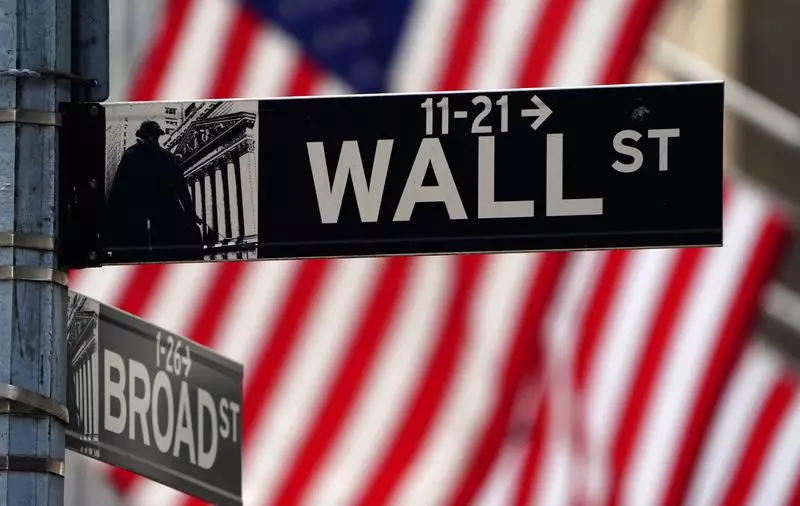As the final trading day of 2024 approaches, Wall Street’s major indexes are positioned for a modest ascent, reflecting an underlying resilience in the post-pandemic economic climate. This shift has been catalyzed by several factors, including anticipated reductions in borrowing costs, advancements in artificial intelligence (AI), and persistent investor optimism. These elements have collectively driven the S&P 500, Dow Jones Industrial Average, and Nasdaq Composite to hover near all-time highs, marking two successive years of gains.
A significant aspect of this bullish sentiment can be traced back to the Federal Reserve’s proactive stance on interest rates. Anticipating a nearly 100-basis point reduction in 2024, central bank policies have laid a solid foundation for equity markets, invigorating investor confidence. The rise of technology stocks has played a considerable role, with the sector perceived as a primary beneficiary of AI advancements. This trend has illustrated a remarkable growth trajectory, notably with valuations for tech, communications services, and consumer discretionary stocks rising over 30% throughout the year.
Nvidia, often hailed as a cornerstone of the AI revolution, has seen its stock soar roughly 170% in 2024, culminating in a staggering market valuation of $3 trillion. While this growth rate falls short of last year’s monumental increase, its market performance underscores the sustained interest in AI-related technologies. Elon Musk’s Tesla has also reclaimed the prestigious $1 trillion milestone, further exemplifying the tech sector’s dominance in the current economic landscape.
As the trading day unfolds, Dow E-minis are rising slightly, along with S&P 500 and Nasdaq futures indicating a positive start. However, it is vital to recognize that trading volumes may be subdued due to the impending New Year holiday, a factor that often leads to heightened volatility and unpredictability in market behavior.
A crucial aspect propelling market dynamics has been the political landscape, particularly the ramifications of Donald Trump’s recent electoral victory. His administration’s promises to dismantle regulatory barriers, reduce tax liabilities, and elevate tariffs on foreign goods have energized investor sentiment. Small-cap stocks, in particular, experienced a resurgence, propelling the Russell 2000 index to a record peak and securing a second consecutive year of favorable performance with an almost 10% uptick.
Nonetheless, the equities market experienced turbulence in December. The S&P 500 is on track for its most significant monthly downturn since April, primarily attributable to escalating Treasury yields amid stretched equity valuations and the Fed’s measured approach. Despite the 10-year Treasury yield easing to 4.5%, concerns surrounding inflation, linked to Trump’s economic strategies, have created uncertainty regarding forthcoming monetary policies, particularly the timing and magnitude of future rate cuts.
Market analysts remain cautiously optimistic, suggesting that clarity on the incoming administration’s tax and tariff frameworks will be critical in shaping future equity performance. Raffi Boyadjian, a leading analyst at XM brokerage, emphasizes that companies’ earnings expectations, particularly in tech and AI sectors, will heavily influence market trajectories in the months ahead.
Furthermore, the anticipated first rate cut by the Fed could materialize in either March or May of 2025, which would further mitigate the cost of borrowing and possibly invigorate economic activities. The burgeoning cryptocurrency market has also garnered attention, with Bitcoin achieving a landmark price of $100,000. Stocks of companies heavily invested in cryptocurrencies, like MicroStrategy, have witnessed tremendous value appreciation, tripling over the year.
Despite the exuberance in various segments of the market, certain industries have grappled with adverse conditions. The materials sector, for instance, has encountered declines exceeding 2%, adversely affected by economic headwinds in China, the world’s foremost consumer of metals. This disparity highlights the complexities of the current market environment, where sectors can experience divergent trajectories based on broader economic trends and geopolitical factors.
As 2024 draws to a close, Wall Street stands at a crossroads influenced by a confluence of economic, political, and technological forces. While the outlook for major indexes remains optimistic, key decisions about fiscal policies, coupled with corporate earnings, are set to shape the direction of the markets in the upcoming year. Investors will need to navigate these waters carefully, attuned to shifts that may alter the landscape further.

